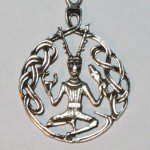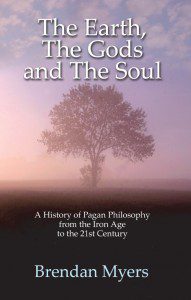 The Earth, The Gods and The Soul – A History of Pagan Philosophy from the Iron Age to the 21st Century
The Earth, The Gods and The Soul – A History of Pagan Philosophy from the Iron Age to the 21st Century
by Brendan Myers
published by Moon Books, November 2013
326 pages
$15.74 in paperback, $7.69 on Kindle
The days when the English majors’ charge of “barbarian engineer” was accurate were over many years ago. Yes, I spent most of my time in college studying technical and business subjects, but my education didn’t stop with graduation. Between reading, listening, traveling, and a lot of thinking, I’ve learned enough history, psychology, anthropology, linguistics, religion, art and music to more than make up for my lack of liberal arts coursework.
Not so with philosophy. Other than what I’ve picked up in my religious studies, my philosophical education doesn’t extend much beyond two sophomore level courses I took 30 years ago. It’s not that I don’t like philosophy so much as there’s always been something I’d rather read instead. Still, it’s a hole in my working knowledge – a hole that needs to be filled.
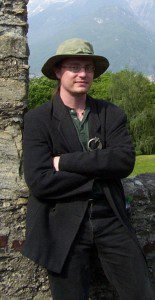
So when I heard Brendan Myers preview his new book The Earth, The Gods and The Soul – A History of Pagan Philosophy from the Iron Age to the 21st Century on The Wigglian Way podcast back in September, I knew I’d have to read it. I just had to find the time.
I finally made the time and I’m very glad I did.
The Earth, The Gods and The Soul is organized into seven major divisions: an “Overture” and six “Movements” based roughly on time. Within these movements are 63 sections on key philosophers and philosophical ideas, some a page or two, others six or eight. The structure makes for very easy reading.
A small book that covers over 2500 years of thought can’t dive too deeply into any of it. Brendan clearly understands he’s writing for a general audience so he begins with a statement of purpose:
The point of a philosophical spirit is to rely primarily upon one’s own thinking. The philosophical spirit is not satisfied to simply accept what it is told, no matter how much prestige the teller seems to have. This is true even if the teller is a god.
No one is served or benefitted by believing in false or faulty ideas.
The first movement “Brainy Barbarians” covers the thinking of the Anglo-Saxons, the Norse, and the Irish. The material we have from them isn’t exactly philosophy – it doesn’t wrestle with ideas and test them with reason. But it does present their wisdom and ethics – their ideas about what is good and right.
When it comes to the ancient Druids, Brendan says “there are things that are known, if not with certainty.” He presents no new information about them, but unlike some historians, he draws reasonable conclusions based on what we do know – an approach that as a modern Druid I find helpful.
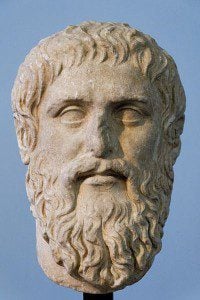
“Philosophy and the City” covers the well-known (and some not-so-well-known) philosophers of Greece and Rome: Pythagoras, Heraclitus, Socrates, Plato, and Aristotle. Myers gives a section to Diotima of Mantinea (4th century BCE), one of the very few women philosophers of her era – “Socrates describes her as one of his most influential teachers.” He also covers three of the major philosophical schools: the Stoics, the Epicureans, the Neo-Platonists.
This is where The Earth, The Gods and The Soul was most helpful to me. I had heard of most of these philosophers, but I couldn’t tell you much about them. The book gave me a high-level look at them and their ideas, plus a look at how those ideas have influenced philosophers, theologians and ordinary people down to this day.
Most of us know that Christianity became the official religion of the Roman Empire in 380 CE. What we forget is that pagan philosophy continued actively for another 200 years, until “in 590 CE, Emperor Justinian I ordered the closure of all the philosophy schools, because he thought they were an intellectual threat to Christian teachings.” At this point pagan philosophy was frozen. It popped up occasionally – usually when Christian writers were accused of being insufficiently orthodox – but it was no longer a living thing.
Pagan philosophy began to return during the Renaissance. Myers quotes historian Jocelyn Godwin, who said “I do not suppose that anyone in the fifteenth or sixteenth centuries was a pagan, in the sense of rejecting Christianity and adopting a pre-Christian religion… What I do suggest is that some people during this period ‘dreamed’ of being pagans.”
I like Brendan’s explanation better:
To put it simply, people got tired of the austerities of Christian discipline and the misanthropy of the Doctrine of Original Sin. They maintained the appearance of being committed Christians, of course … But they dramatized for themselves a world that never knew Original Sin, and so still existed in a state of original blessing. In that imagined world it was no sin to ‘dance, sing, feast, make music, and love’ … and despite the heroic efforts of puritanical counter-Renaissance activists like Savonarola, the box would never be shut again.
“Pantheism in the Age of Reason” covers the philosophers who are the forerunners of modern Paganism. John Toland (1670-1722) described God as “the Mind, if you please, and the Soul of the universe … not separated from the Universe itself, but by a Distinction of Reason alone.” Ross Nichols considered Toland the first Chosen Chief in the line that would become the Order of Bard, Ovates and Druids. There is no evidence that’s true, but if Toland wasn’t a Druid, he was certainly Druid-friendly.
This movement also includes the American thinkers Ralph Waldo Emerson, Henry David Thoreau, John Muir, and Walt Whitman. Their ideas on Nature and the sacredness of Nature still influence religious and secular environmentalists alike.
“Resurgence, Reinvention, Rebirth” covers the people behind the beginnings of modern Paganism in the late 19th and early 20th centuries: Helena Blavatsky, James Frazer, Robert Graves and Gerald Gardner. Myers deconstructs “The Charge of the Goddess,” which he credits to Doreen Valiente, borrowing from Theosophy, Leland’s Aradia, and Aleister Crowley.
The Charge of the Goddess asserts universalism, pantheism, immanence, virtue ethics, neighborly love, intelligent self-interest, a little bit of humanism, and some good old fashioned hedonism. A fitting testament, perhaps, for a self-consciously pagan movement. Interestingly, almost all these ideas were in some way represented in the ancient pagan world.
As for Uncle Al himself, Brendan says “The only part of Crowley’s work which seems to me genuinely original is the cloth of occultism and magic in which he dresses everything.” He also says something that fits far too many writers and leaders in all religions:
One must remember Nietzsche’s warning: ‘Those who know they are deep strive for clarity. Those who would like to seem deep to the crowd strive for obscurity.’
“The Birth of American Feminist Witchcraft” marked a major event in Pagan philosophy.
After Justinian closed the philosophy schools in the sixth century, pagan philosophy lost its access to institutions, and thus lost its capacity to sustain a developing tradition. But in the 1970s, with the introduction of second-wave feminism, that capacity returned.
With the support of these new institutions, Pagan philosophy was no longer limited to repeating the ideas of the classics:
Pagan philosophy from the dark ages until the middle of the twentieth century had been about only three things: pantheism, Neo-Platonism, and Humanism, corresponding to the earth, the gods, and the soul. Now it could also be about a fourth thing: power, especially the dynamics of male and female power, and the just and unjust exercise of political power.
The other major stream in revived Pagan philosophy is “The Rise of Eco-Spirituality.” Though much of tribal religion is focused on the tribe itself, “ancient people sometimes worshipped the actual features of their natural landscapes … religious devotion to natural immensities wasn’t just a figure of speech … But by the late Roman period the eye of piety had mostly turned away from the earth.”
This began to change partly in response to the wild beauty of the New World and partly in response to the pollution and desecration brought on by the Industrial Revolution. Myers quotes Aldo Leopold (1887-1948), who said “a thing is right when it tends to preserve the integrity, stability, and beauty of the biotic community. It is wrong when it tends otherwise.”
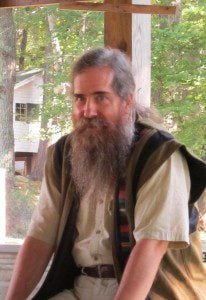
“Living Voices” is a survey of influential Pagans and Pagan ideas alive today. It includes the rise of virtue ethics, Starhawk and political activism, Emma Restall Orr and animism, John Michael Greer and A World Full of Gods, Michael York, Vivianne Crowley, and Patheos Pagan contributor Gus diZerega.
The final movement “A Commentary” reiterates the need for functioning institutions: “Without organizational support, ideas tend to take the form of strongly and/or poetically expressed propositions, and rather little else.”
It also speaks of “The Will to Dwell in an Enchanted World”
The world is enchanted … its mysteriousness is not its hidden-ness: its mysteriousness is in the way that however much we discover, there is always more to discover … an interesting world is a world with an inexhaustible supply of revelation and immensity. I think that people cannot live without something in the world that is interesting like this.
The Earth, The Gods and The Soul is the philosophy book I needed to read. It gave me a good introduction to classical philosophy, taught me some key ideas, gave me references to follow for more in-depth reading, and perhaps most importantly, showed me the philosophical heritage of many of the ideas I live by and promote here on this blog.
I usually end a book review with a quote from the author, but in this case I think it’s better to end with a quote from ADF Archdruid Kirk Thomas, who, in his review on Amazon, said “The only question for modern Pagans becomes, where do we go from here?”


